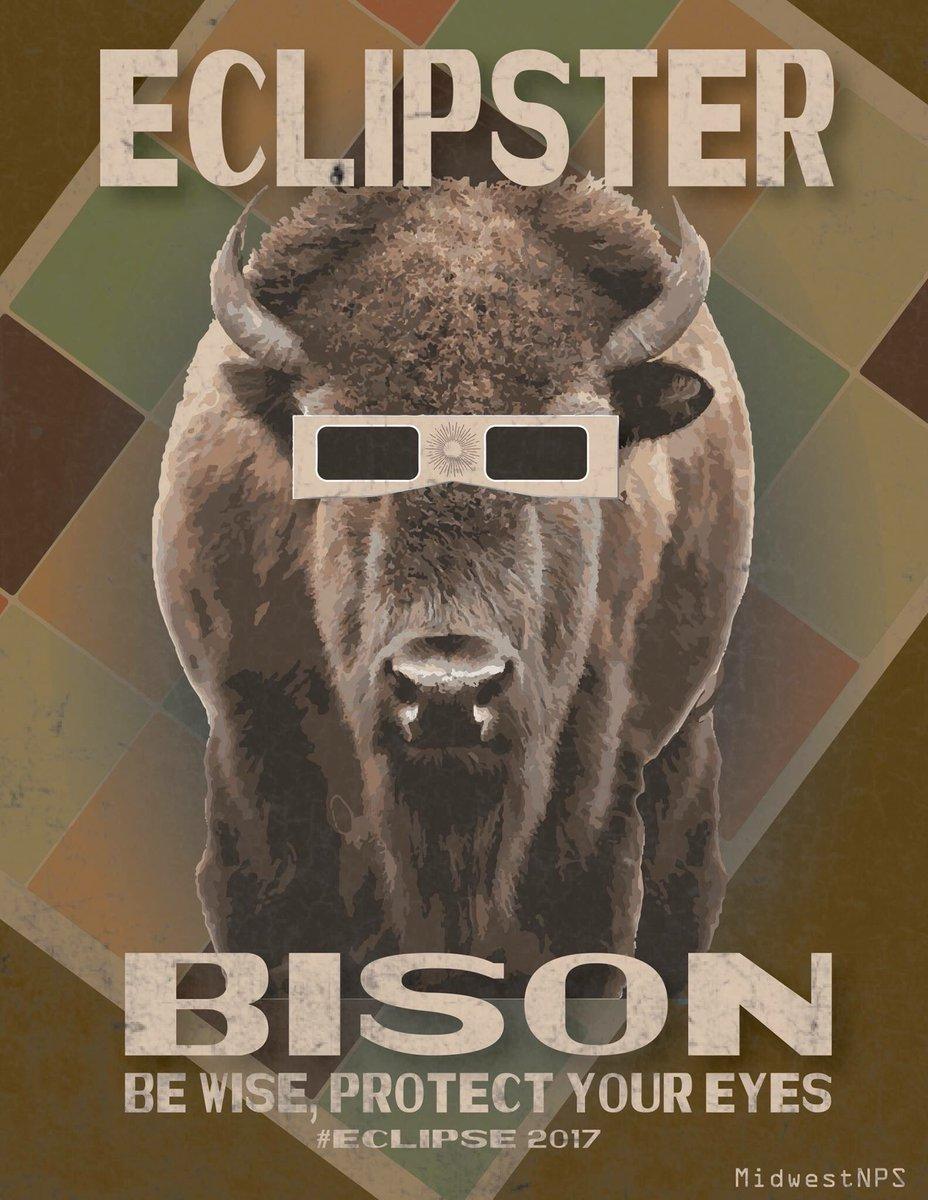
Don't forget your solar eclipse sunglasses!/NPS
Grand Teton National Park managers expect August 21, --the day of the Total Solar Eclipse Across America-- to be the busiest single day in the history of the park. Visitors to the park on eclipse day can ensure a successful viewing experience by developing a plan and heeding a few simple guidelines.
Complete eclipse viewing information can be found in a special edition newspaper available in park visitor centers and entrance stations, and by visiting www.nps.gov/grandteton and clicking the eclipse banner.
Visitors are invited to view the eclipse from the center path of totality along the Gros Ventre Road, which will be the largest eclipse viewing area in the park. The road will be one-way traffic eastbound from its junction with U.S. Highway 26/89/191 to the community of Kelly, with parking allowed in the left lane. Portable toilets will be located along the road, as well as park staff.
Rangers and astronomers will provide telescopes and interpretive programs at four designated eclipse viewing areas including the Gros Ventre Campground Amphitheater, Craig Thomas Discovery and Visitor Center parking area, Jackson Lake Lodge back lawn, and behind the Colter Bay Visitor Center.
Due to limited parking available at the Gros Ventre Amphitheater, parking passes are required. One hundred free passes will be distributed on a first-come, first-served basis Saturday, August 19, from the Craig Thomas Discovery and Visitor Center in Moose and the Colter Bay Visitor Center starting at 8 a.m. Campers at the Gros Ventre Campground and visitors parking along the Gros Ventre Road are invited to join the program by walking to the amphitheater.
The eclipse will be visible throughout the park with the duration of totality ranging from 2 minutes 19 seconds near the park's southern boundary to just a few seconds along the park's northern boundary. No matter where visitors view the eclipse, they should be prepared with ample food, water, eclipse glasses, sunscreen, and other necessary items for the day as little to no infrastructure exists in most locations.
Visitors should pack out all trash and recyclables and heed the following guidelines as they make their eclipse day plans:
- Expect heavy congestion, traffic gridlock, and long delays. Allow ample time to arrive at your eclipse viewing location and consider staying in place afterward until traffic thins,
- Have water, food, and vehicle fuel for the day. Bring a minimum of 2 quarts of water per person,
- No roadside parking will be allowed on U.S. Highway 26/89/191, Teton Park Road, or Moose-Wilson Road,
- Eclipse parking begins at 6 a.m. park-wide. Overnight parking or camping in roadside pullouts, turnouts, or parking lots is not allowed,
- Prevent human-caused wildfires. Charcoal burning and campfires are allowed only at designated campgrounds and picnic areas within metal fire grates. Stoves and grills that burn contained fuel sources such as liquid petroleum gasesare allowed on hardened surfaces if attended at all times, and
- Additional portable toilets will be located throughout the park.
Several special eclipse and astronomy programs are planned in the park this weekend, Friday, August 18, through Sunday, August 20. Please visit the park's website or the special eclipse newspaper for more information.



Add comment